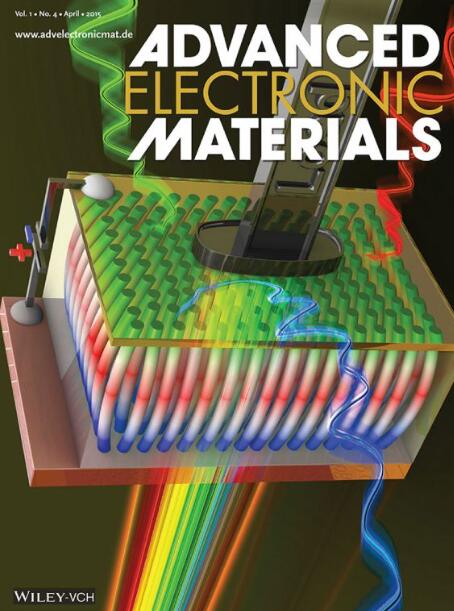Observation of 1/f4 Noise in Organic Bilayer Ambipolar FETs and Proposition of Defect Engineering Method for Ultimate Noise Control
IF 5.3
2区 材料科学
Q2 MATERIALS SCIENCE, MULTIDISCIPLINARY
引用次数: 0
Abstract
The omnipresence of low‐frequency noise (LFN) within semiconductor materials and devices poses a substantial concern for the reliability of integrated circuits (ICs). Consequently, considerable research endeavors are directed toward characterizing LFN across various types of field‐effect transistors (FETs), pivotal components in IC. Here, the LFN characteristics of bilayer ambipolar FETs based on organic semiconductors are investigated, / uri / We report that interface defects at the n/p junctions engender a correlation between trapping/detrapping noise and generation/recombination noise, resulting in a 1/有机双层双极性场效应管中1/f4噪声的观察及缺陷工程方法的提出
半导体材料和器件中无处不在的低频噪声(LFN)对集成电路(ic)的可靠性提出了实质性的关注。因此,大量的研究工作都是针对不同类型场效应晶体管(fet)的LFN特性进行的,fet是IC中的关键部件。本文研究了基于有机半导体的双层双极性场效应晶体管的LFN特性。我们报告说,n/p结处的界面缺陷会产生捕获/去捕获噪声和产生/重组噪声之间的相关性,从而导致1/ f4噪声。通过对单n沟道和p沟道场效应管的LFN进行全面和比较研究,阐明了这种独特的噪声行为。此外,提出了一种在n/p结之间插入薄绝缘层(聚对二甲苯)的新方法来控制双层双极场效应管中的过量噪声。这产生了噪声幅度的显著降低,同时导致1/ f4噪声分解为1/ f3和1/ f2分量。本研究不仅首次报道了独特的1/ f4噪声背后的潜在机制,而且提出了一种实用的控制策略,从而为有机基场效应管的LFN研究开辟了新的视野。
本文章由计算机程序翻译,如有差异,请以英文原文为准。
求助全文
约1分钟内获得全文
求助全文
来源期刊

Advanced Electronic Materials
NANOSCIENCE & NANOTECHNOLOGYMATERIALS SCIE-MATERIALS SCIENCE, MULTIDISCIPLINARY
CiteScore
11.00
自引率
3.20%
发文量
433
期刊介绍:
Advanced Electronic Materials is an interdisciplinary forum for peer-reviewed, high-quality, high-impact research in the fields of materials science, physics, and engineering of electronic and magnetic materials. It includes research on physics and physical properties of electronic and magnetic materials, spintronics, electronics, device physics and engineering, micro- and nano-electromechanical systems, and organic electronics, in addition to fundamental research.
 求助内容:
求助内容: 应助结果提醒方式:
应助结果提醒方式:


